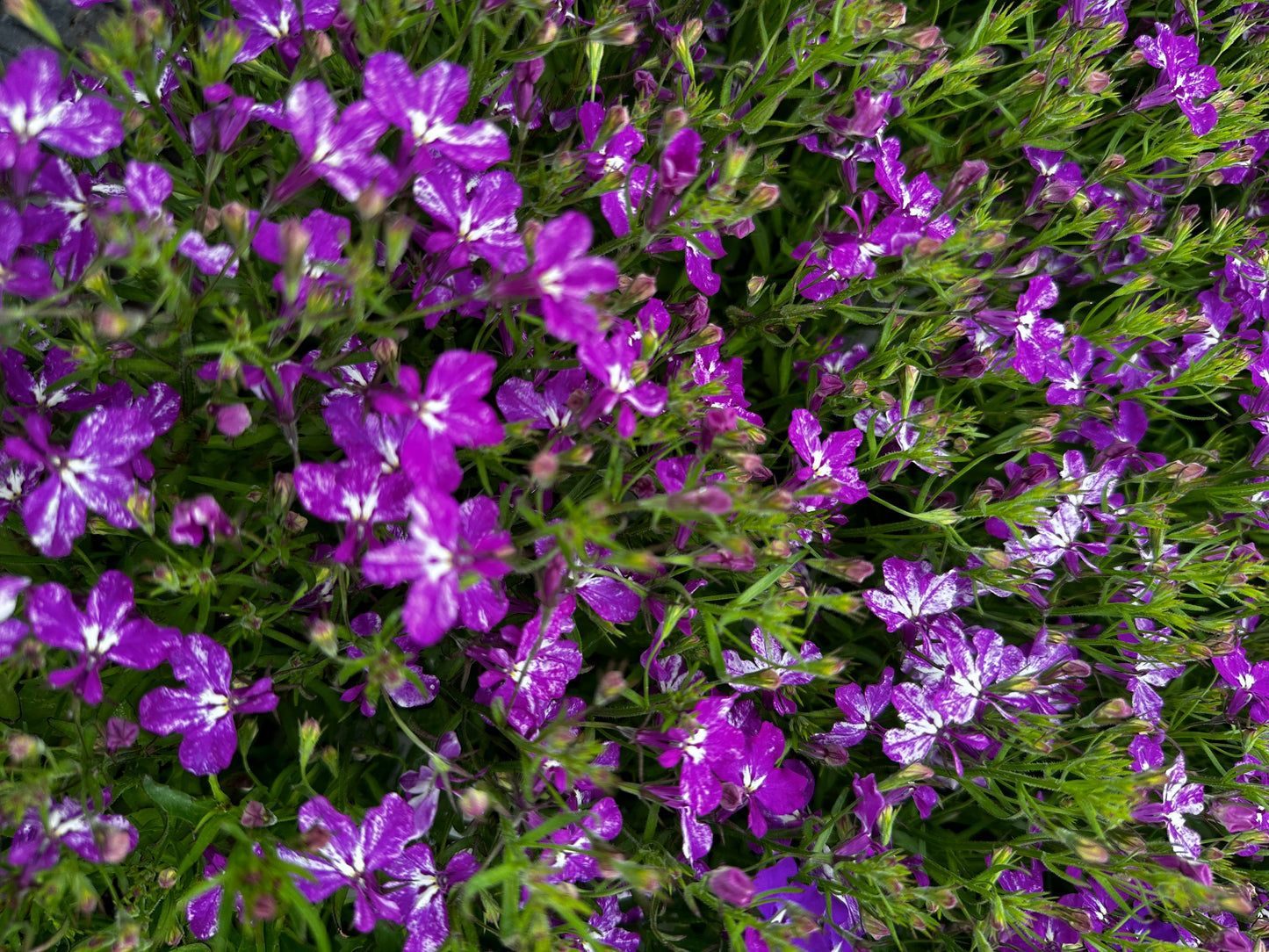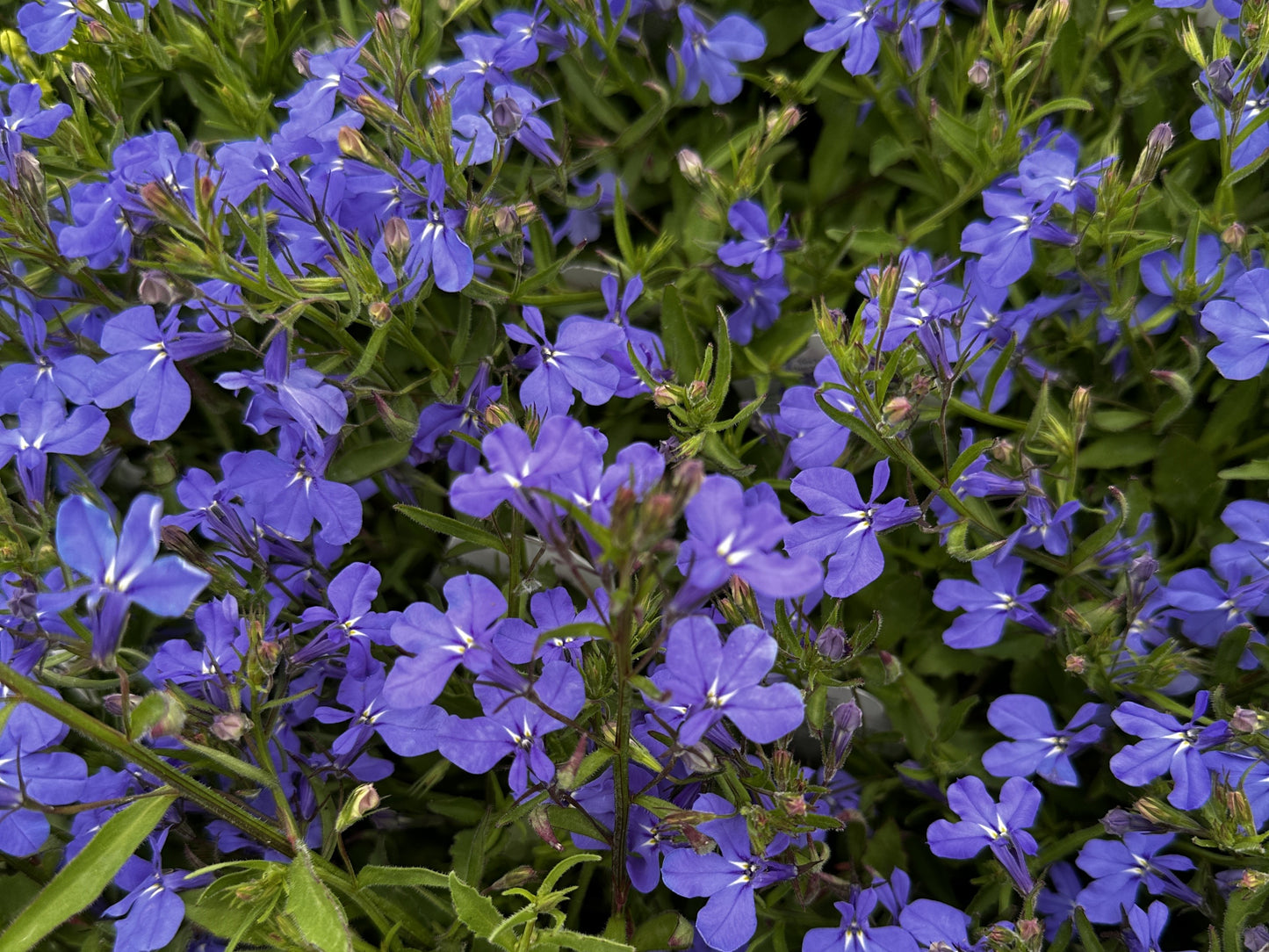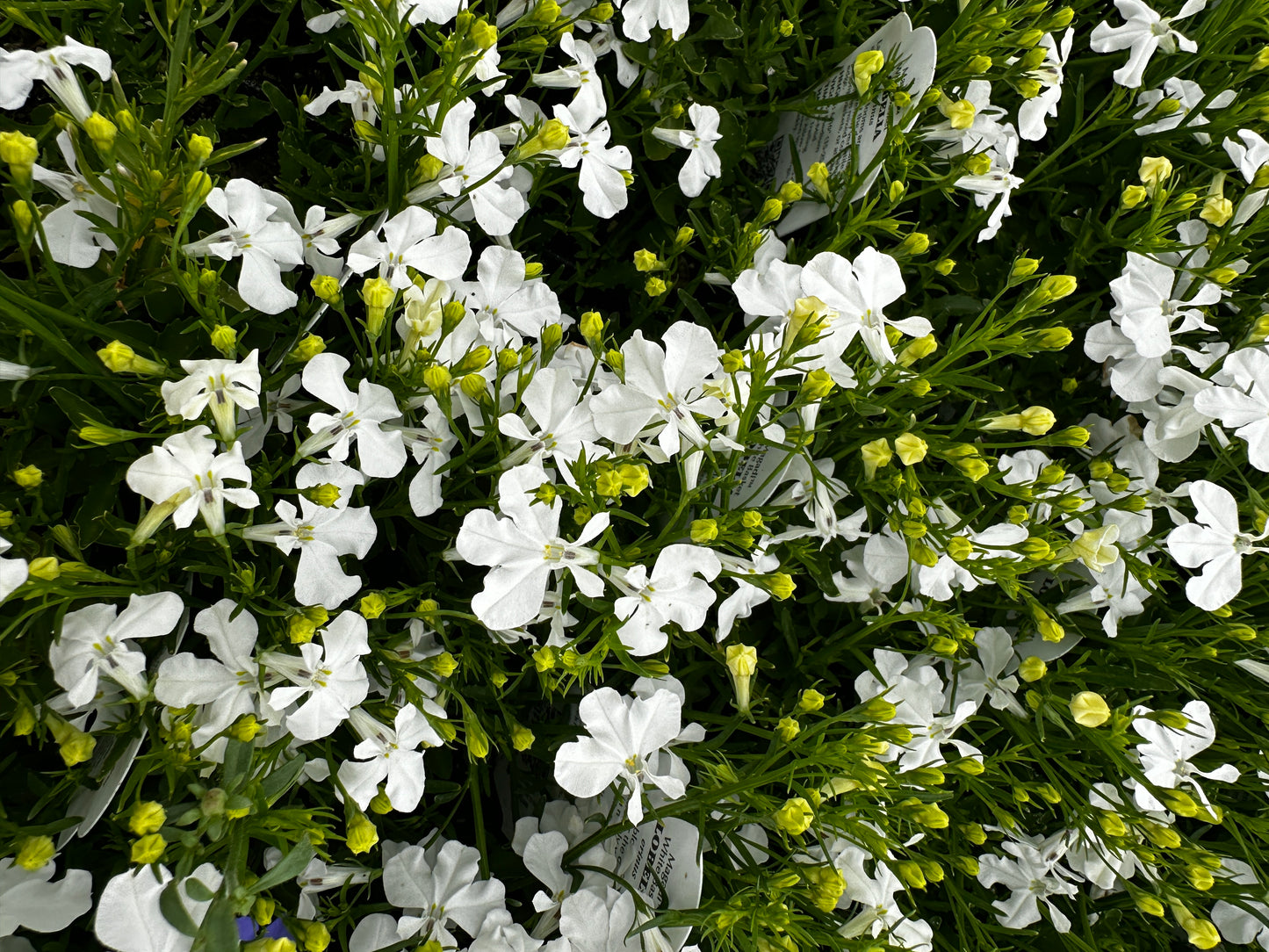Lobelia
Common Name: Chinese creeping lobelia
Type: Herbaceous perennial
Family: Campanulaceae
Native Range: Eastern Asia, South Africa
Zone: 6 to 9
Height: 0.25 to 0.50 feet
Spread: 1.00 to 3.00 feet
Bloom Time: July to October
Bloom Description: Pale pink to white
Sun: Full sun to part shade
Water: Medium to wet
Maintenance: Medium
Suggested Use: Ground Cover, Naturalize
Flower: Showy
Attracts: Hummingbirds, Butterflies
Tolerate: Wet Soil
Best grown in rich, medium to wet soils in full sun to part shade. Needs constant moisture. Tolerates full sun, but appreciates part afternoon shade in hot summer climates. This species thrives in very moist soil conditions, but also does surprisingly well in average garden soils as long as those soils are not permitted to dry out. Root mulch should be applied in cold winter climates such as St. Louis to protect the root system and to prevent root heaving. This lobelia has the potential to spread invasively by self-seeding and creeping stems in optimum growing conditions.
For more information visit: Missouri Botanical Garden
Type: Herbaceous perennial
Family: Campanulaceae
Native Range: Eastern Asia, South Africa
Zone: 6 to 9
Height: 0.25 to 0.50 feet
Spread: 1.00 to 3.00 feet
Bloom Time: July to October
Bloom Description: Pale pink to white
Sun: Full sun to part shade
Water: Medium to wet
Maintenance: Medium
Suggested Use: Ground Cover, Naturalize
Flower: Showy
Attracts: Hummingbirds, Butterflies
Tolerate: Wet Soil
Best grown in rich, medium to wet soils in full sun to part shade. Needs constant moisture. Tolerates full sun, but appreciates part afternoon shade in hot summer climates. This species thrives in very moist soil conditions, but also does surprisingly well in average garden soils as long as those soils are not permitted to dry out. Root mulch should be applied in cold winter climates such as St. Louis to protect the root system and to prevent root heaving. This lobelia has the potential to spread invasively by self-seeding and creeping stems in optimum growing conditions.
For more information visit: Missouri Botanical Garden








